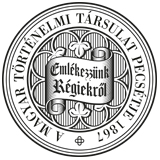Századok – 2022
2022 / 3. szám - TANULMÁNYOK - Pálosfalvi Tamás: Két (király)választás Magyarországon. Habsburg Albert és Jagelló I. Ulászló magyar királysága
PÁLOS FALVI TAMÁS TWO (ROYAL) ELECTIONS IN HUNGARY Albert of Habsburg and Wladislas III Jagiellon by Tamás Pálosfalvi SUMMARY The paper examines the evidence concerning the elections of Duke Albert of Habsburg and King Wladislas III of Poland as kings of Hungary (1437/1440). It argues that Albert was not accepted as King Sigismund’s successor in Hungary, while Wladislas III was supported as a pretender by the emperor’s Hungarian entourage already before 1437. Under pressure from his Hungarian barons, who enjoyed the support of the empress Barbara of Cilii, shortly before his death Sigismund probably consented to the division of his inheritance, with Bohemia going to Albert and his wife Elizabeth of Luxemburg, and Hungary to Wladislas III. Albert and Elizabeth, however, took control of the dying Sigismund, arrested the empress and Mihály Ország, head of the pro-Jagiellonian Hungarian political faction, and instead of departing for Bohemia forced their way to the Hungarian throne. It was, however, with reference to the supposed consent of Sigismund to the Jagiellonian succession that right after the death of King Albert (1439) the Polish court demanded the Hungarian throne for Wladislas III. Although by that time the favoured candidate of the Hungarian elite was the son of the Serbian despot, Lazar Brankovic, the Polish government, under the direction of bishop Olesnicki of Cracow, eventually forced the Hungarians to accept the candidacy of Wladislas by playing the Ottoman card and exploiting the international connections of the widowed Barbara, who had taken shelter in Cracow. 503
